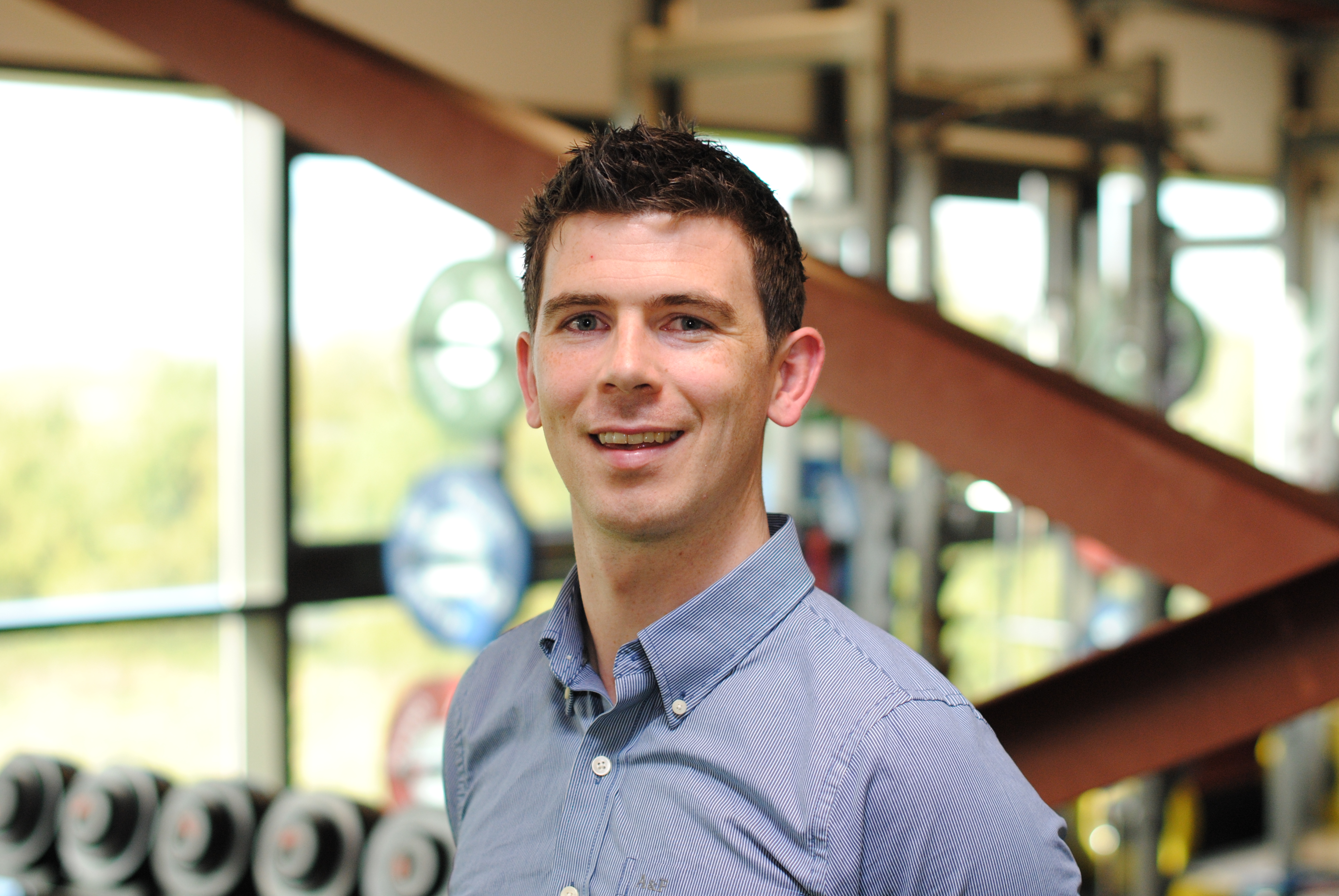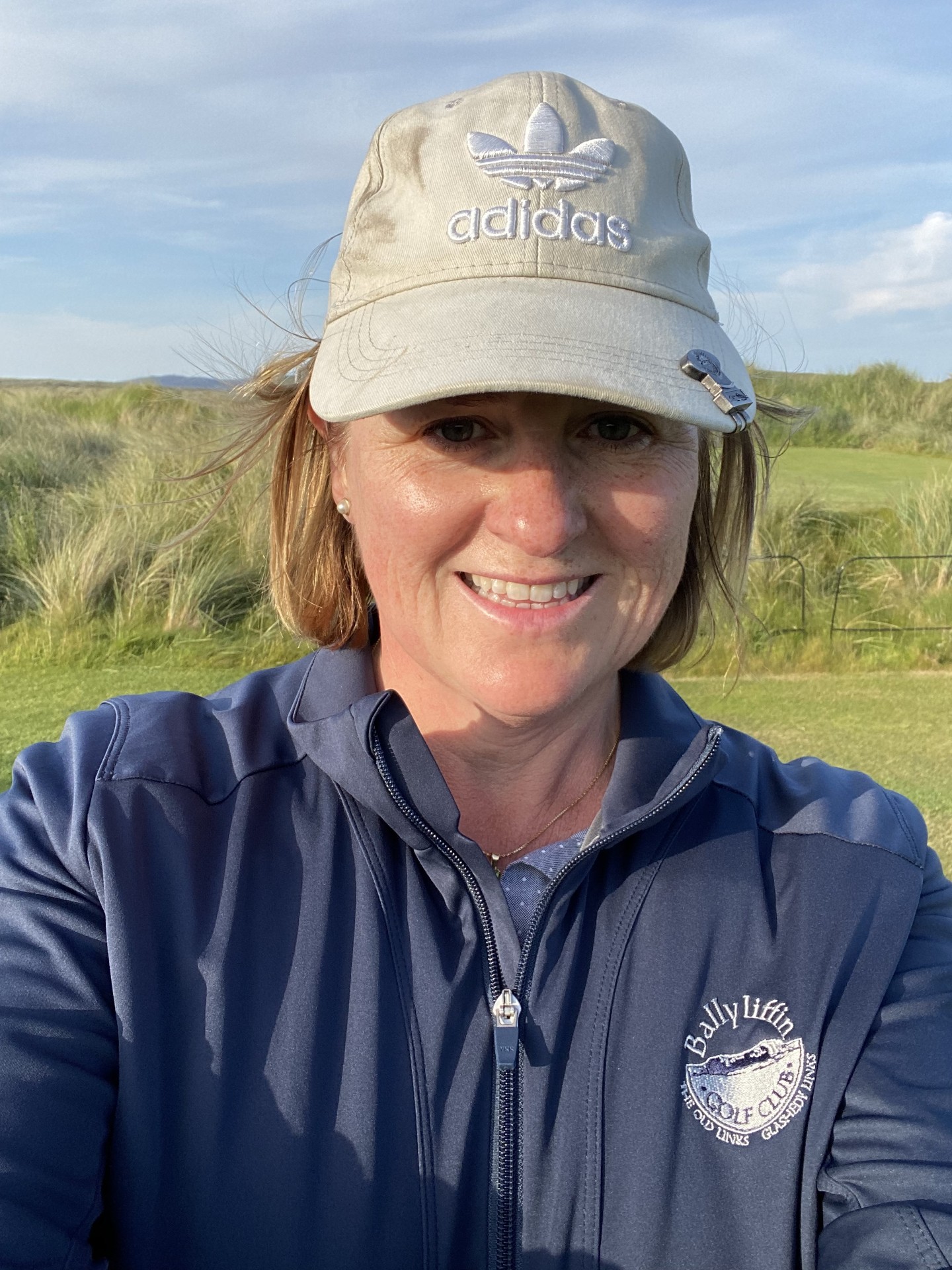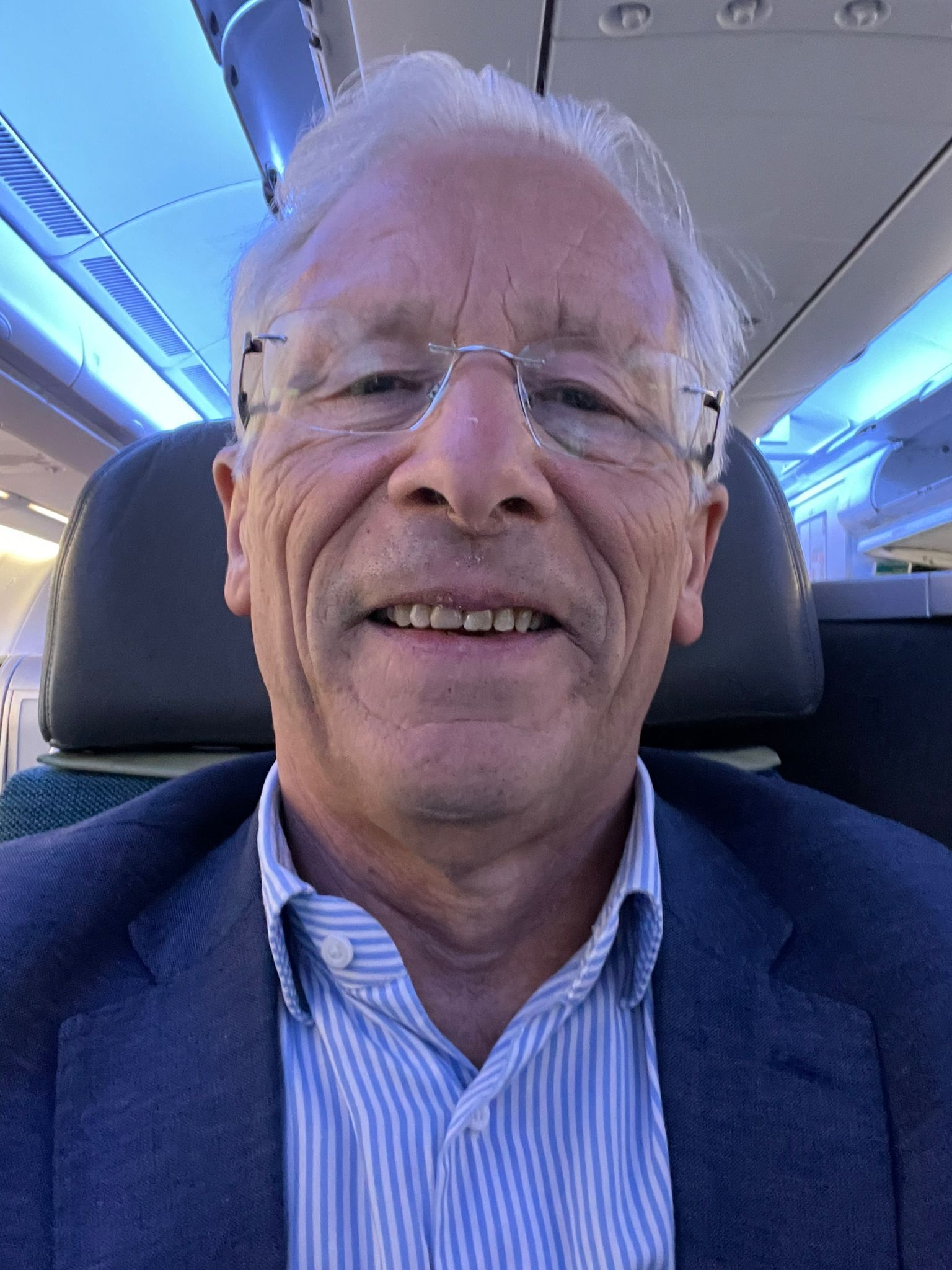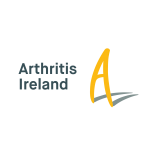 SSC is delighted to support Arthritis Ireland with their BePrOActive Campaign. Launched today, this campaign is a new awareness campaign that looks to help people living with osteoarthritis (OA) by providing expert information about living with the condition, including the role of physical activity and healthy eating.
SSC is delighted to support Arthritis Ireland with their BePrOActive Campaign. Launched today, this campaign is a new awareness campaign that looks to help people living with osteoarthritis (OA) by providing expert information about living with the condition, including the role of physical activity and healthy eating.
Osteoarthritis (OA) is a long-term chronic disease characterised by the deterioration of the cartilage in joints which results in bones rubbing together and creating stiffness, pain and impaired movement. The disease most commonly affects the joints in the knees, hands, feet and spine and is relatively common in the shoulder and hip joints. While related to ageing, OA is also associated with obesity, lack of exercise, genetic predisposition, occupational/sports injury and gender. Research indicates that significant numbers of people with OA are living with other chronic conditions.
Osteoarthritis is one of the ten most disabling diseases in developed countries and affects 18% of women and 10% of men over 60 years.
The prevalence of OA is increasing due to population ageing and an increase in related factors such as obesity. According to the CSO, by 2051 one-third (1.8 million) of the Irish population will be aged 60 years and over; up from one-fifth (866,000) in 2016. This represents a significant societal and personal challenge.
While frequently described as a ‘wear and tear’ arthritis, this is an over-simplification of the underlying pathology. It also frames OA as an inevitable feature of life and of ageing, over which people have little control.
This awareness campaign, therefore, looks to change the conversation around osteoarthritis in Ireland, by encouraging people living with the condition to take a proactive approach to the management of their OA.
To learn more about Osteoarthritis watch this video of Dr Barry Sheane, Consultant Rheumatologist at SSC discussing the causes of osteoarthritis, symptoms, how OA is diagnosed and treated with Grainne O’Leary, CEO of Arthritis Ireland.
Dr Sheane also looks at pain management in osteoarthritis, the role of physical activity and diet, managing if you’re living with other conditions and the role of surgery.
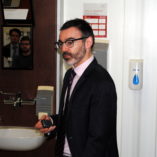 Dr Barry Sheane is a Consultant Rheumatologist specialising in Osteoarthritis at UPMC Sports Surgery Clinic in Santry, Dublin.
Dr Barry Sheane is a Consultant Rheumatologist specialising in Osteoarthritis at UPMC Sports Surgery Clinic in Santry, Dublin.
This is a transcript of Grainne O’Leary (GOL) discussing Osteoarthritis with Dr Barry Sheane (DBS).
GOL: Hello everybody and you are very welcome to this broadcast about living with Osteoarthritis. I am Grainne O’Leary, Chief Executive of Arthritis Ireland. I am delighted to be joined today by Dr Barry Sheane, Consultant Rheumatologist.
So by way of introduction, osteoarthritis is the most common form of arthritis, affecting millions of people worldwide and thousands of people here in Ireland. It can affect any joint in the body, but it commonly affects the weight-bearing joints of the knees and hips.
So Barry you are very welcome and thank you for joining us here today. I am going to start off with the first question ‘What is osteoarthritis’?
DBS: So osteoarthritis is the most common disease of the joints in the world. It is a condition that involves the whole joint.
We commonly talk about osteoarthritis being about cartilage and cartilage wearing down, but we actually feel that cartilage breaking down is the end process of the whole disease, and the actual disease itself possibly starts in other structures in the joint, for example, the bone underneath the cartilage, in the joint fluid perhaps, in the lining of the joint (the synovial membrane), and perhaps the cartilage and all of those structures.
What are the symptoms of Osteoarthritis (OA)?
GOL: What are the key signs and symptoms of osteoarthritis?
DBS: So the main symptom that would alert somebody that they may have an issue with osteoarthritis is pain. It might be pain when somebody is doing an activity, towards the end of the activity, or maybe just after the activity.
Some people will report that they have some stiffness if they have been sitting for a long while, or if they haven’t been using an affective joint for a while. It can progress to involve pain at night that keeps people awake and even joints can change shape and become deformed.
GOL: We will talk a little bit more about what actually happens in osteoarthritis. You mention the term wear and tear – it’s a term we often hear people referring to their type of arthritis as.
So can you just tell us a little bit more about what is actually going on there?
DBS: So we all use the term wear and tear; Rheumatologists, Orthopaedic Surgeons, Physiotherapists, all of us involved with treating osteoarthritis, but most of us recognise that the term is most likely inaccurate.
There is certainly causes of Osteoarthritis that relate to damage and wear and tear but most of the issues and causes of OA involve other processes, for example, the genes that you are born with are probably the biggest factor. If you are overweight? Being overweight will affect not just the weight bearing joints like the hips and the knees but also is a risk for hand OA.
If you are female? That is an added risk compared to being male. If you have damaged the joint from a sports injury or some type of injury in the past? And getting older is also a risk factor.
Can you prevent OA?
GOL: Are there things that people can do to prevent getting osteoarthritis? You mentioned there about genetics – I guess we can’t do much about the genes we are born with but are there other risk factors that we can maybe reduce in order to prevent it?
DBS: So there are things that you can’t avoid like your genetics, but there are some things that you can certainly do, and one of those things is to stay as fit as possible, to exercise regularly and to try and maintain your optimum weight – the weight when you were approximately 21 years of age. If you can get to that weight, get close to it or even lose some weight if you are carrying some more pounds than you should be, you have a significant risk of reducing your risk of osteoarthritis.
For every extra pound or kilogram, you carry, you are putting an extra four pounds or kilograms of pressure through your knee. Also in that regard, if you lose a pound or kilogram of weight you are taking that pressure multiplied by four off the joint which could be significantly beneficial.
Is OA an Inevitable part of Aging?
GOL: You sometimes hear people talking about getting older and it is inevitable you are going to develop osteoarthritis. Is osteoarthritis an inevitable part of ageing?
DBS: It is not inevitable – there is a higher chance that when you get older you will develop it. Two-thirds of people who have osteoarthritis are under 65, about 15% of the general population will have osteoarthritis.
So yes, the risk of it increases as you get older, but it is not inevitable. People who are an optimum weight and who exercise regularly, do have a lower chance of osteoarthritis. For example, if you can lose 5 kilograms of weight, you reduce your risk of osteoarthritis by 50% – but easier said than done.
GOL: You have mentioned there about damage to the joint or injury. What about people who have been in accidents or experienced for example sports injuries when they were younger, are they at greater risk of developing OA?
DBS: Unfortunately yes. One of the things that is important if you are going to be exercising, is that you try and ensure that you have supporting structures around your joints that are as strong as possible, particularly the muscles, and if we are talking about knee or hip arthritis, you are talking about strong thigh muscles, strong buttock muscles, strong core muscles.
Unfortunately, we know that significant injury will potentially lead to osteoarthritis. For example, half of the people who rupture their cruciate ligament will go on to develop osteoarthritis and possibly need a knee replacement.
How is a diagnosis of Osteoarthritis made?
GOL: In terms of the people who are experiencing signs and symptoms, how is that actual diagnosis of osteoarthritis made?
BDS: The diagnosis is made usually with clinical skills rather than actually needing fancy tests. So when you approach your doctor, you will have some of the characteristic symptoms like I said earlier; pain when you are moving your joint or afterwards, maybe some stiffness in the morning when you wake up first thing or after sitting for a while, pain towards the end of the day, maybe the joint has changed shape, maybe it has been swelling – they are things that your doctor will use to help diagnose.
Then when your doctor examines you they may see some of the characteristic changes they see in osteoarthritis, such as restriction in how the joint moves, certain types of noises we call crepitus when the joint moves, maybe changes in the shape of the joint, boney swelling.
X-Rays can be used to help diagnose the condition but they are not essential. MRI tends not to be used unless absolutely necessary. Blood tests unless the treating physician feels that there could be another cause for the joint condition such as gout or rheumatoid arthritis are generally not needed either.
GOL: I think a lot of people sometimes feel that what doesn’t show up on an x-ray it is not osteoarthritis, but that does not really build the whole picture does it?
DBS: It is absolutely true and what you often see is somebody come into your clinic and they will have an x-ray of their knees on the screen and you will look at the x-ray and the right knee might look much worse than the left knee on the x-ray and you will sit and talk to the patient and find that they have absolutely no symptoms in their right knee and it is all affecting the left knee. So the x-rays can help but they are not everything.
What other joints besides Hips & Knees are often affected by OA?
GOL: We mentioned the hips and the knees being the key weight-bearing joints that are often affected by osteoarthritis but what other joints can be affected by osteoarthritis?
DBS: So one of the most commonly affected joints is what we call the thumb base or CMC joint and this is one of the most used joints in the body.
So it is common for people with osteoarthritis to develop pain in this area and this can manifest as pain also coming into the web space here or down into the thumb.
Other joints that can be commonly affected is what we call the first MTP joint, the base of your big toe. Your neck or cervical spine, your low back or lumbar spine are also areas that can be affected.
How is OA treated?
GOL: So moving on, let’s have a look at how osteoarthritis is actually treated – can you tell us a little bit more about that?
DBS: There are many societies and international bodies that meet on a regular basis to discuss recommendations about how to treat osteoarthritis, and every single one of those organisations recommends exercise as the core treatment for osteoarthritis.
Also, and we mentioned earlier, is optimizing your weight.
That doesn’t mean you have to lose ten kilograms or 10 stone, it means that you might just have to lose some weight and take some pressure off your joints.
So they are the core things; good diet, maintaining your weight, and exercise
Then you have other measures such as painkilling treatments. We prefer those types of medications that limit side effects, so for example the anti-inflammatory gels. There are many studies that would say the anti-inflammatory gels are nearly or just as good as the anti-inflammatory tablets, so we are familiar with medicines like Ibuprofen and Nurofen which are simple anti-inflammatory medicines.
They are actually very effective treatments for osteoarthritis, however, we try and use them as little as possible because if you are taking those medicines on a regular basis, we worry that there may be issues with stomach ulceration, we worry about the cardiovascular system, and they can potentially affect the kidneys and your liver function as well.
Nonetheless, many patients with osteoarthritis will need anti-inflammatory tablets and they can work really well.
Paracetamol or Panadol is also a medication that you will hear used. That has lost a lot of favour in the last number of years as an effective tool. It is felt to not have a very good painkilling effect.
| If we compare the painkilling effect of exercise to the anti-inflammatories, the studies will say that they have a very similar painkilling effect, in fact, exercise might outperform the anti-inflammatories and that is a scientifically proven fact and it is interesting. |
Then you will also hear of people having steroid injections into their joints. Steroid injections can work well but they would not be a tool you would use first off, you would try exercise, supervised physiotherapy, and then some of the other measures.
Increasingly many of us are using something called Hyaluronate. Hyaluronate is a natural component of your cartilage and your joint fluid. In a synthetic form when injected into the knee joint, it can have an anti-inflammatory effect and can help with pain as well.
Then there are other measures, for example, unloader braces which are contraptions you would wear over your knee if you have as we call it malalignment or the alignment of your knee is not perfectly straight. They can help certain types of osteoarthritis of the knee and then at the end of the line if those measures are failing and somebody is in pain and they can’t carry out their activities of everyday living, you have to visit the surgeon and discuss maybe a joint replacement.
What can Patients do to help manage OA and their Pain?
GOL: In terms of the patient, what can they do themselves to help manage osteoarthritis and their pain?
DBS: In terms of helping themselves, exercise once again, and I am sounding like a broken record, but that is the key treatment. Now the problem with exercise is that if you have never exercised before, it feels like a huge barrier or mountain to climb. Exercise doesn’t mean preparing for the Olympics or preparing for the Tour de France, it might mean getting off the couch and walking five hundred metres, or even one hundred metres, and going home and trying to do that every second day for a month and slowly but surely trying to increase that.
Overwhelmingly the evidence would say that if you are going to start an exercise programme, you should engage with a physiotherapist or a physical therapist to help guide you and the encouragement you get from somebody else also tends to lead to better outcomes because you’re more likely to do what you are told and if you have someone supporting you, you may have a better outcome.
Then in terms of other measures, for example, say if you take up an exercise programme, you may find that after exercise the joint plays up a bit – that you have more pain in your knee, or your hip, or your shoulder, or whatever joint is affected. There are things you can do to limit that pain, for example, you can ice a joint that is affected. Now it sounds very archaic, but taking a frozen packet of peas, wrapping it in a J cloth, and placing it over the affected joint for a minute and leaving it off for a minute and repeating that for five minutes can help.
Some patients will take painkillers pre-emptively, so, for example, somebody is going to go for a thirty-minute walk, they know at the end of the walk they may take an anti-inflammatory or rub on their anti-inflammatory gel before they go on their walk.
So there are different things you can try. One of the things to look out for is developing pain after your exercise when the pain is prolonged. If the pain is prolonged after you start exercising you are doing too much and you have to go back and maybe just reduce the duration and intensity of your exercises and try and build it up slowly. But that again is where a physiotherapist or a physical therapist can be useful.
What can people with other conditions on top of OA do to manage their situation?
GOL: For people watching as well, we actually have company videos on exercise and also on diet and healthy eating as well. Just a word to people who are watching this.Just some discussion around osteoarthritis and other conditions. Many people who are diagnosed with osteoarthritis might be living with other conditions as well such as diabetes, obesity, maybe osteoporosis, cardiovascular disease you mentioned as well. What can people do to manage in these more complex situations as well?
DBS: So that is a really good question, I am not going to mention exercise as the first answer because it will get monotonous. The anti-inflammatories as I said are very useful medication for osteoarthritis. But as I also mentioned there can be issues with side effects, so if you are diabetic and you have associated kidney disease, or you are at risk of heart disease, then the anti-inflammatories will be generally discouraged, so the anti-inflammatory gels or Paracetamol may be more useful.
It is the same thing for kidney disease, the same way for people who have heart disease or stroke. But getting back to exercise, if you have heart disease or suffer from obesity or have diabetes, exercise is a key treatment that patients who suffer from those conditions should be engaging with.
Does the weather cause osteoarthritis and does it make it worse?
GOL: Moving on now to some of the myths of osteoarthritis, I would like to discuss a few of those. So one question we get asked a lot about in Arthritis Ireland is what about the weather? Does the weather cause osteoarthritis and does it make it worse? I am sure this is something you are familiar with being asked about.
DBS: Well, believe it or not, I have a bit of osteoarthritis in my hip. So when I know when it is a tiny bit colder or damper I will get a tiny bit of discomfort in it. Cold or damp weather doesn’t cause osteoarthritis, but it can sometimes make the symptoms somewhat worse.
Osteoarthritis is prevalent throughout the world at the equator and in warmer climates. So it doesn’t have a role, but it can sometimes make the joints feel sorer.
What about Diet?
GOL: What about diet?
DBS: So diet is something I am always asked about and patients are very interested in their diet which is always really encouraging. Often people go to extensive lengths to eliminate foods that think, read or hear about are causing their arthritis.
For some reason tomatoes have a bad reputation, citrus fruits will not in any way affect your osteoarthritis. They will have much more beneficial health effects rather than a detrimental effect on your joints.
A healthy balanced diet is what everybody needs. You will read about an anti-inflammatory diet, essentially an anti-inflammatory diet are plenty of foods, plenty of fresh foods, vegetables, fruit, some oily fish, limiting your exposure to processed meats and foods, drinking plenty of water, not cutting out bread you don’t have to go gluten-free if you have osteoarthritis, trying to limit how much alcohol your drink, not smoking, and trying to maintain your weight.
Those measures essentially constitute a healthy diet. Also making sure you get enough protein in your diet is important because one of the main structures that helps support your joints are your muscles and if you are not getting enough protein you may not be able to replace the musculature adequately. So your diet is essential, but that does not mean you need to eliminate things from your diet. The people who are drinking pints of apple cider vinegar every day should probably stop doing that because it is not very nice either.
GOL: One of the other myth’s, there may be people watching who may have grown up with that belief that exercise is bad for their arthritis.
DBS: That’s nobody’s fault, if it is anybody’s fault it is probably the medical profession because many of us over the years have said you need to stop exercising now or propagated the myth that running is bad for your joints. There is some very nice research that has shown that people who are sedentary get much more severe osteoarthritis of their knees than runners.
Exercise is not bad for your joints.
If you have pain in your joints because of osteoarthritis, the damage essentially is done and what exercise has a number of ways of helping the joint. First of all, if you don’t exercise, your joint fluid starts to deteriorate in quality so when you start exercising, you help to maintain and replenish healthier joint fluid. Your joint fluid is important because it acts as a shock absorber and if your joint fluid is not healthy then it might contribute to your cartilage breaking down quicker. Also, exercise helps to maintain strong muscles which support your joints.
There are so many reasons why exercise is the most important treatment for osteoarthritis. But we have to challenge what many peoples impression of exercise is and I think the videos you mentioned are very helpful in that regard. Once again it does not mean that you are going to become a professional athlete or you are going to spend hours in the gym trying to exercise, far from it. Just getting up and moving might be the first step.
When do surgery and joint replacements become the best option for people?
GOL: Moving on now to issues around surgery and joint replacement. At what point do those interventions become the best option for people and is there a percentage of people who go on to need surgery that are living with osteoarthritis?
DBS: So the only cure we have for knee and hip osteoarthritis is surgery. That is essentially a cure. But it is an extreme cure. If you can avoid surgery then you should. However, the outcomes from hip and knee surgery are absolutely excellent but ultimately what we want to do is try and avoid surgery if we can.
The risk of knee and hip osteoarthritis is approximately 25% and 45% respectively throughout your life, so in other words, you have a 1 in 4 chance in your lifetime of developing hip osteoarthritis, but you have a much smaller percentage chance of needing a hip replacement or knee replacement. I can’t give you a precise percentage but it is much lower, so if you have hip or knee osteoarthritis you are much less likely to need surgery than anything.
What does the future hold for OA?
GOL: Lastly, what does the future hold for osteoarthritis? I sometimes hear people speaking saying there is not a lot happening in this area when you compare it may be with other types of arthritis you see great advancements. Is there research going on in this area, is the future looking brighter with osteoarthritis?
DBS: I think we are on the cusp of major improvements in definitive treatments for osteoarthritis and there is a lot of research going on worldwide
Remember that osteoarthritis is costing the global economy billions every year because of lost days in work, expensive surgery like knee and hip replacements. So there is a real incentive for us to get definitive treatments and cures for osteoarthritis.
There are a number of treatments that for the first time where results have started to be published in the medical journals and some of these treatments are looking at repairing cartilage, so allowing cartilage to regrow, some of them are looking at stopping cartilage breaking down, some of them are actually looking at ways to prevent pain. One of those particular medicines is a protein called nerve growth factor and those medications may well be becoming available soon on the market but they would be for people with severe osteoarthritis.
So there are many positive things that are emerging and I think over the next 5-10 years, we are going to see an explosion in new therapies.
| For further information or to make an appointment with Dr Barry Sheane please contact info@sportssurgeryclinic.com |

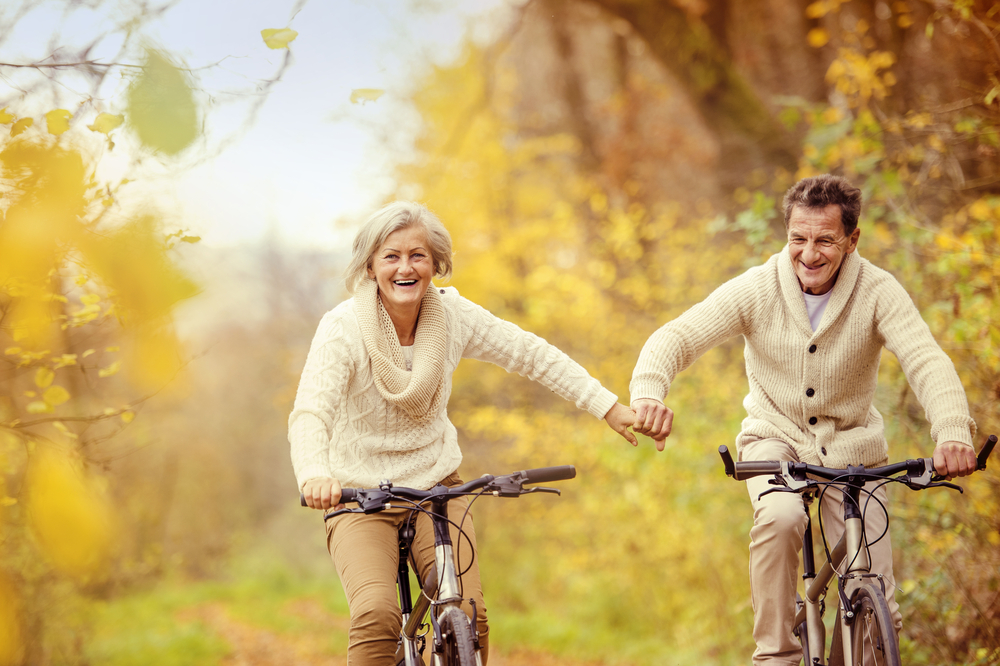


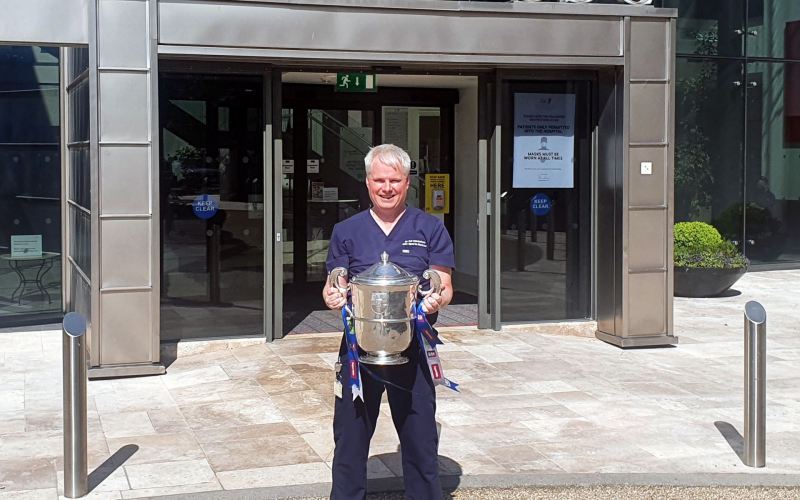
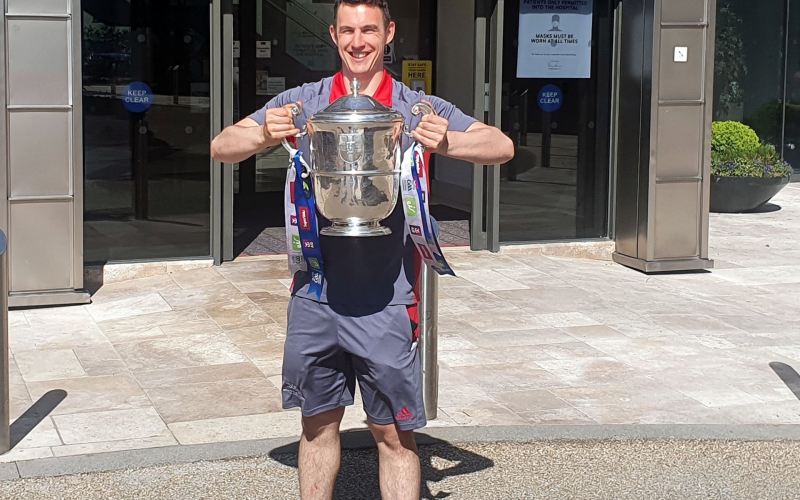
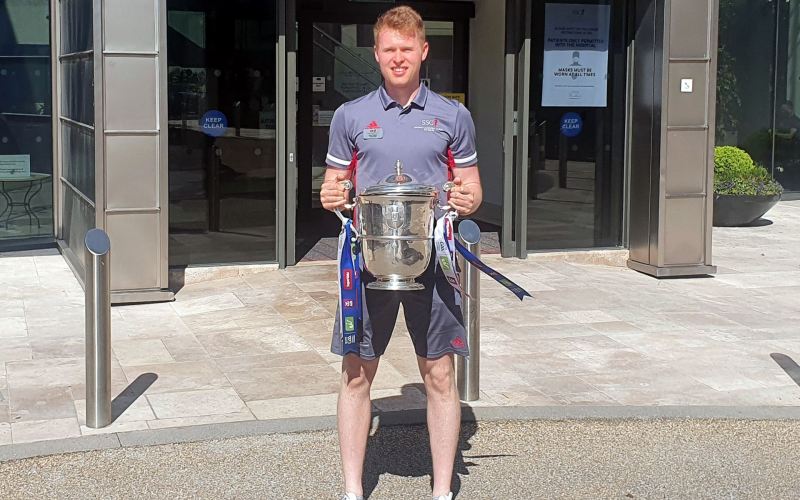



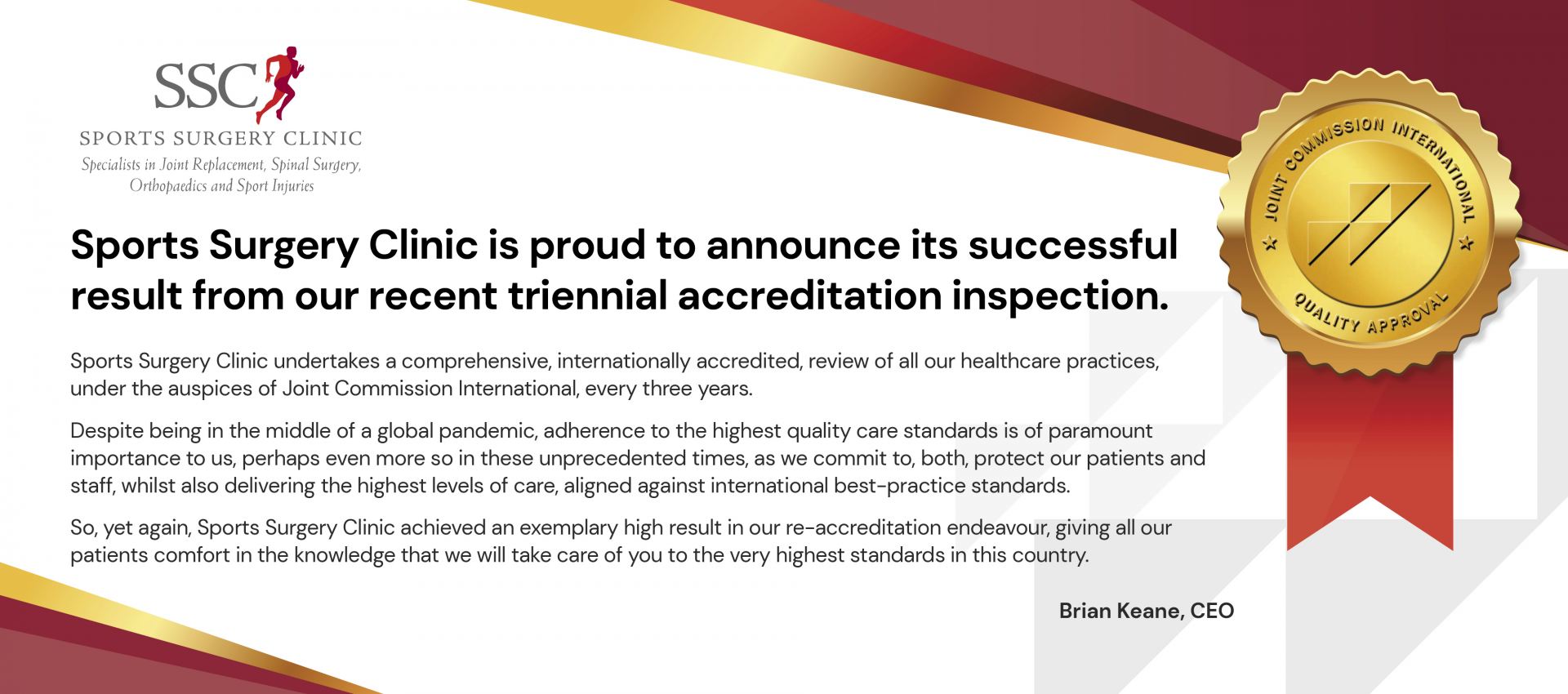

 Meanwhile,
Meanwhile,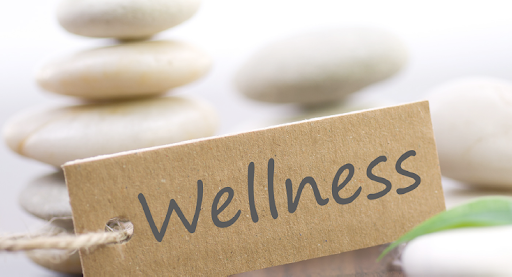


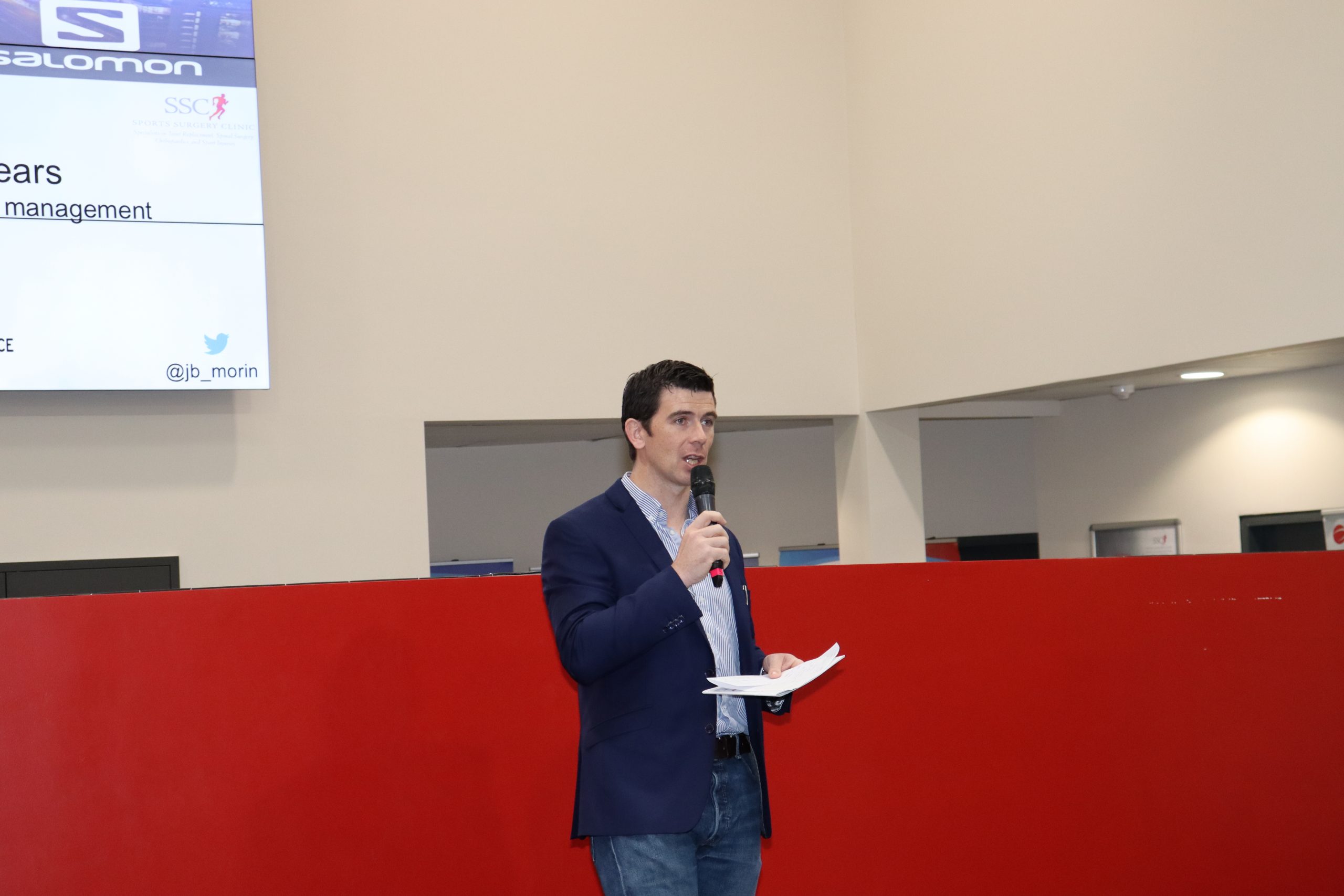

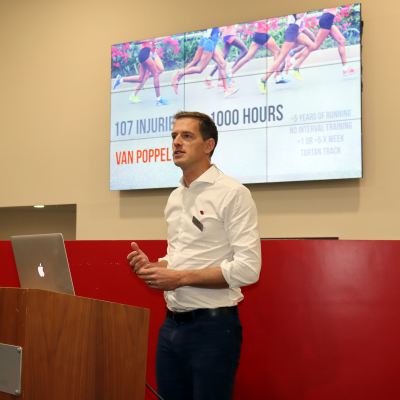 Listen to
Listen to 